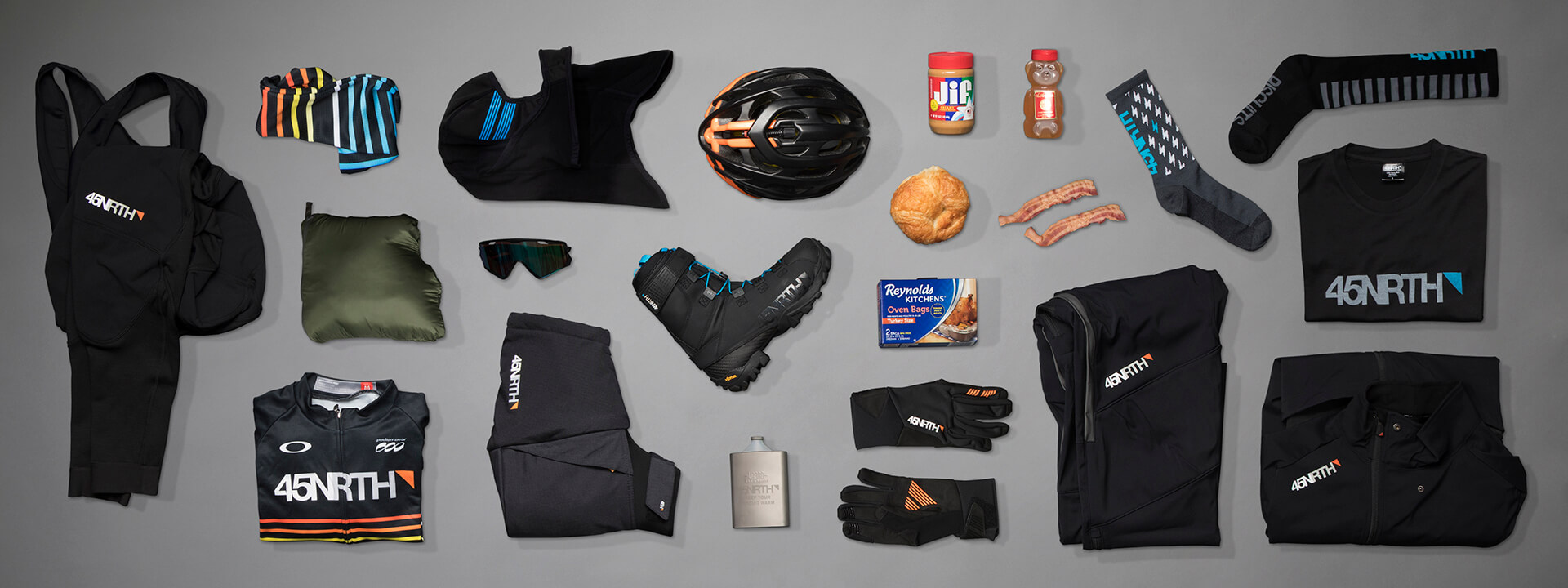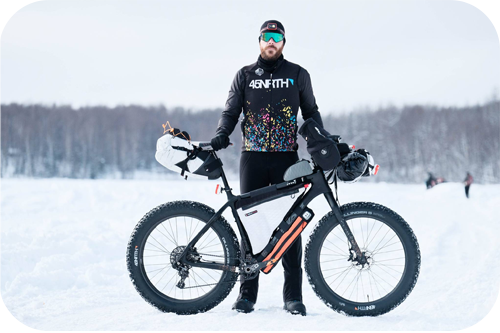What to Wear for Extreme Winter Cycling at -25º - -10ºF
Posted by Steve on 12/03/18
Last modified: 01/13/23

Editor’s Note: If you’re a brave soul who stops at nothing to get out and ride, these temps will likely send a chill of excitement down your spine. This week, Kurt shares his favorite kit for temps ranging from -25° to -10°F (-32° to -23°C).
Don’t sweat. These two words of advice have been handed down from very experienced riders and it is the best advice I can give for anyone deciding what to wear cycling at 25 below zero.
The reason you want to avoid sweating is to minimize the moisture that finds its way into your insulation. When insulation gets wet, it limits the space for air and no longer insulates against the cold, and could even start to freeze in bad conditions. Material choice, ventilation and exertion all play key roles in keeping you dry and happy.
The Best Material to Wear When It’s Below Zero
Wool is my favorite material. It wicks moisture away from the skin and keeps most of its insulation value even when wet. I keep as much wool against the skin as possible. Up top, I wear the 45NRTH Merino Tee. You’ve seen this in pretty much every temp range because it’s super versatile. I even wear it in the summer! I’ll usually throw on some wool arm warmers to keep the blood flowing to my extremities.
For my lower body, I’ll pair a lightweight wind brief (to protect my … sensitive area) with the Naughtvind Bibs. The wool-lined bibs are perfect for wicking moisture away from the skin and the windproof panels add protection in key areas.
Next, I’ll throw on 1 or 2 mid-weight wool layers, like a simple 150g long sleeve and a Podiumwear jersey, depending on the level of exertion. If I know I’m going to exert a lot of energy during my ride, I’ll shed a layer to keep sweat at a minimum.
The Naughtvind Jacket and Pant round out the kit. The jacket and pant block wind, which is critical for keeping heat in. They also have ample venting to let the inevitable moisture to escape.
An important trick to remember when deciding what to wear for extreme winter cycling is: Let the sweat out. No matter how hard I try, I always sweat a little, so combining wool to wick the sweat away from my skin with an outer layer that breathes makes a massive difference in being miserable or comfortable at 25 below zero.
How to Protect Your Feet Cycling at 25 Below
On my feet, I use the opposite approach. Preventing my feet from sweating is impossible, so instead, I trap all the moisture inside a vapor barrier which keeps any wetness from getting into my boot insulation. Here’s how I Iayer my feet:
- Start with a super lightweight wool 45NRTH socks
- Add a vapor barrier, like a Reynolds Turkey Bag
- Add my insulation layers, like the knee-high socks
- Slip on my Wolfgar boot
- Attach gaiters
Wearing a turkey bag may seem weird, but that vapor barrier keeps my boots dry and traps all that comfy heat my body is throwing out.
Most people think gaiters are for keeping snow out of your boots. While they do work for that, they are also adding a layer of insulation to your lower leg which keeps the blood from cooling as it travels from your core to your feet. Warmer legs equal warmer feet!

Protecting Your Hands While Cycling at 25 Below
Cobrafist pogies keep my hands super warm and allow easy operation of zippers and access to food when you’re riding. I wear lightweight liner gloves all the way down to -25ºF. The vents help regulate heat and keep sweat to a minimum.
More Extreme Winter Cycling Tips
Even though we may not want to admit it, Mom was right — we lose most of our heat through our head. I like to have a variety of options to regulate heat through my head while I ride. I almost always wear the Toaster Fork Balaclava and pair it with a neck gaiter that I can pull up over my face if needed.
On top of the balaclava, I’ll either wear the Greazy or Stovepipe depending on how windy it is. This allows me to make quick adjustments on the fly to keep from getting to the point of no return. I like to roll a summer helmet for the same reason. I’ll usually size up for winter to accommodate the extra layers.
I always carry a packable puffy jacket in case I have to stop for any reason. It can literally save your life! I also carry a flask with some whiskey … and rarely do I drink the whiskey straight! I usually throw a little in my water to keep it from freezing. Though a nice shot of whiskey can really warm you up, too! I also love delicious peanut butter, honey, and bacon croissants while I’m riding in the winter. The buttery croissant doesn’t freeze and the fats from the bacon and peanut butter keep me fueled!

Riding in the winter requires trial and error. Since comfort is personal, the best way to find the right gear is to test it out. Kurt’s favorite kit is a great starting point to dialing in your own kit for winter riding in -25 to -10ºF weather. Check out the other temp ranges here:
